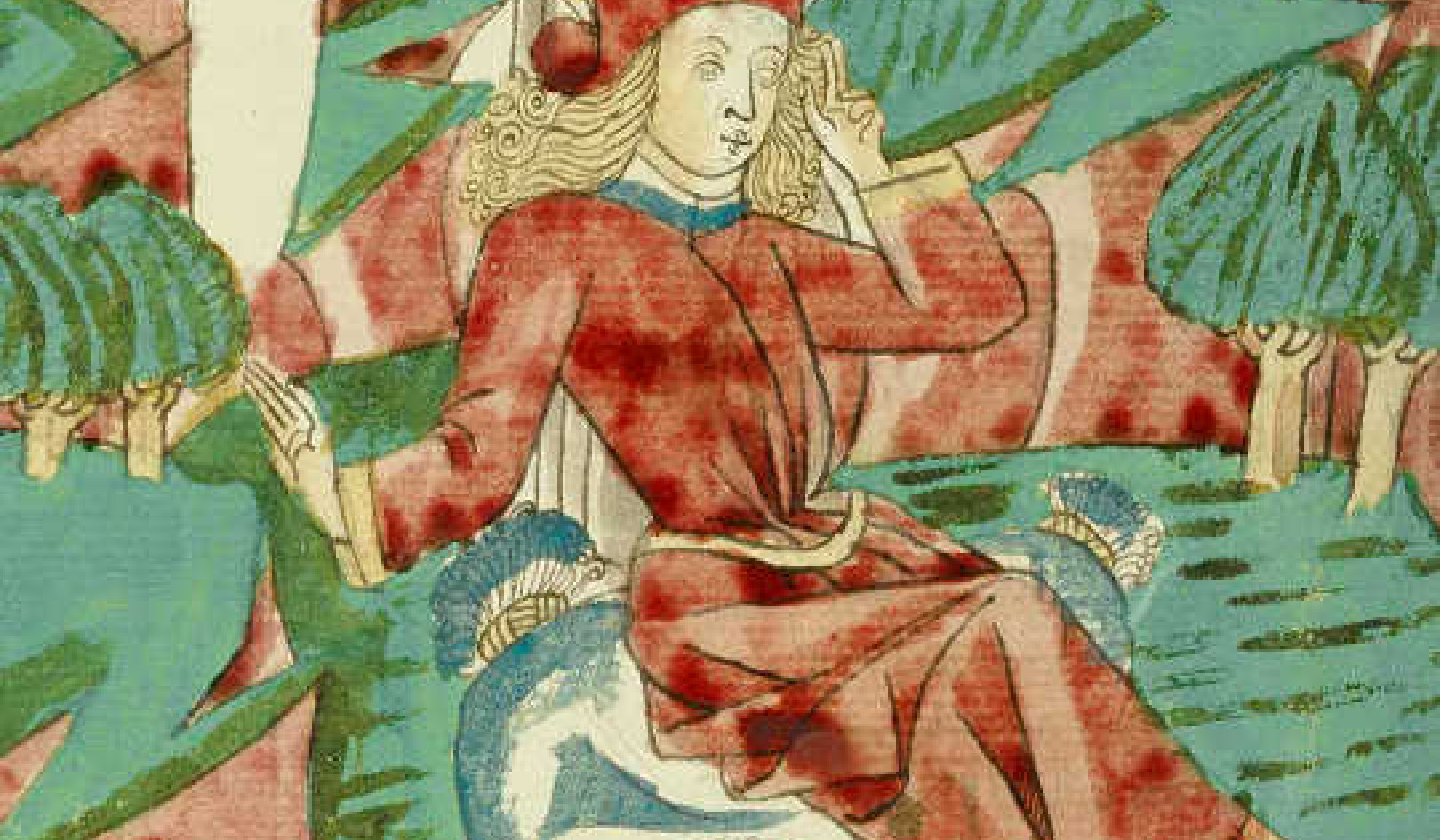
Over the years I have practiced a number of Buddhist meditation techniques, including Mindfulness of Breathing, Loving Kindness, and Anapanasati on a daily basis. Whilst learning about Eckhart Tolle’s teachings, I developed a meditation technique to directly cultivate Presence.
Being in any of the stages of Presence Meditation is beneficial and we can move from one stage to the next at our leisure. We should be kind to our self as we practice and move naturally through the stages at our own pace.
Presence Meditation -- Stage One -- Thought
Settle into your posture and gently close your eyes to begin the first stage. The first stage involves bringing awareness to your thoughts. The reason that we start here is that our thoughts are usually active prior to meditation and act as the main blocker to accessing concentration.
Starting with awareness of thoughts allows us to accept them and has a natural settling effect before concentrating on another meditation object such as the breath. So meet your thoughts where they are with awareness and a kind acceptance and move forward from there.
If your mind is completely still to begin with then you can move directly to Stage Two. Otherwise, take some time to observe your thoughts. What is your mind doing? Is it telling stories, showing pictures or playing movies? Observing the mind in this way naturally quietens it. You can stay in this stage, observing the mind for as long as is required to quieten it.
It is important not to be driven to quieten the mind, as this will create more thought. Simply observe what the mind is doing and allow it to quieten naturally. By doing this you are being the awareness that is observing the thoughts rather than getting lost in them or adding to them. You see that your awareness, which is who you really are, is separate from your thoughts, enabling perspective and freedom.
As the mind quietens and creates larger gaps between thought, you will naturally become aware of other things, including your feelings, body and breath. Once this happens and you can become aware of three full breaths without getting lost in thought, you are ready to move on to the next stage. It is fine if you stay in the first stage, bringing awareness and acceptance of your thoughts for the whole time. Starting the meditation and sticking with it for the time you had planned is primary and moving through stages is secondary.
Whilst observing your thoughts, you may notice your ego at work. A common method used by the ego to reinforce itself is to create persistent thought patterns relating to things we identify with. If you observe your thoughts and emotions, you will find common themes that are repeated on a regular basis. These are parts of your ego. Bringing awareness to them within and outside of meditation helps to gain perspective. Let go and return to the present moment. Any thoughts that arise from the present moment will be creative and helpful.
When you do catch the ego operating, this means you have regained a connection with your true essence and can mentally label it “there is the ego”. That is all that is required. The ego is not good or bad so judgements are unnecessary and unhelpful. Simply, label the ego, accept it is creating thoughts and then allow the thought patterns to pass, returning to the meditation technique.
Presence Meditation -- Stage Two -- Breath
Once you are aware of three full breaths, you may enter the second stage. In this stage, you direct all your attention to the breath. Examine its different characteristics, including the length, frequency, texture and sound as it constantly changes. You have the whole of the breath to work with from the point where the air enters your nostrils or mouth down into the depths of your lungs. You are not trying to control the breath in any way. Simply allow it to flow naturally and operate through the body’s intelligence without any conscious intervention from the mind. Your job is to give the breath your full attention, accepting whatever forms it takes.
Once you anchor to the breath in this way, it is inevitable that your awareness is going to tune in to other objects that are presented to you, including other bodily sensations, sounds, feelings and thoughts. You may also be aware of subtle lights and colours even with your eyes closed. The mind may create images, movies, sounds and discussions. Being aware of these other objects instead of getting lost in them means you are Present. Accept the experience without judging it and then bring your attention back to the breath.
It is human nature to become lost in thought during meditation. You may experience a feeling that triggers a thought, which leads to a story, and before you know it you have lost touch with the present moment. This happens to people (including experienced meditators) many times during meditation. Once you realize you are lost in thought, which might be several seconds or minutes into the thought stream, you can congratulate yourself because at that point you have regained your awareness.
If this continues to happen, you should return to Stage One, observing the thoughts before returning to Stage Two after holding your attention for three full breaths. Never give yourself a hard time about being lost in thought within or outside of meditation. Having a continuously peaceful and concentrated mind is the vision, which can take years or even lifetimes to achieve.
You should be looking for progress, not perfection. There will be ups and downs to your practice inside and outside of meditation. If you observe general progress in your level of Presence over the last few months or years, you are heading in the right direction. The most important thing is the practice itself. Stay focused on the practice and the results will take care of themselves.
©2018 by Darren Cockburn. All Rights Reserved.
Publisher: Findhorn Press, an imprint of
Inner Traditions Intl. www.innertraditions.com
Article Source
Being Present: Cultivate a Peaceful Mind through Spiritual Practice
by Darren Cockburn
 Offering a synthesis of spiritual teachings viewed through the lens of modern personal experiences, Darren Cockburn provides practical insight into how to cultivate a peaceful mind, live skillfully, and nurture a spiritual connection through the power of the present moment. The author shares practical exercises, meditations, and reflections, revealing how to free yourself from becoming lost in unhelpful thoughts and emotions, while bringing acceptance to what life presents you with. He explores how to work with occurrences like tiredness, illness, and pain as spiritual teachers for enriching your presence of mind and being.
Offering a synthesis of spiritual teachings viewed through the lens of modern personal experiences, Darren Cockburn provides practical insight into how to cultivate a peaceful mind, live skillfully, and nurture a spiritual connection through the power of the present moment. The author shares practical exercises, meditations, and reflections, revealing how to free yourself from becoming lost in unhelpful thoughts and emotions, while bringing acceptance to what life presents you with. He explores how to work with occurrences like tiredness, illness, and pain as spiritual teachers for enriching your presence of mind and being.
Click here for more info and/or to order this paperback book and/or download the Kindle edition.
About the Author
 Darren Cockburn has been practicing meditation and mindfulness for over 20 years, studying with a range of teachers from different religions. As a coach and teacher, he has supported hundreds of people in meditation, mindfulness, and finding a connection to spirituality, with a focus on applying spiritual teachings in everyday life to cultivate a peaceful mind. Darren also works as a business consultant supporting organizations with strategy formulation, interim leadership roles, and transformation programs. Visit his website at www.darrencockburn.com
Darren Cockburn has been practicing meditation and mindfulness for over 20 years, studying with a range of teachers from different religions. As a coach and teacher, he has supported hundreds of people in meditation, mindfulness, and finding a connection to spirituality, with a focus on applying spiritual teachings in everyday life to cultivate a peaceful mind. Darren also works as a business consultant supporting organizations with strategy formulation, interim leadership roles, and transformation programs. Visit his website at www.darrencockburn.com
at

Thanks for visiting InnerSelf.com, where there are 20,000+ life-altering articles promoting "New Attitudes and New Possibilities." All articles are translated into 30+ languages. Subscribe to InnerSelf Magazine, published weekly, and Marie T Russell's Daily Inspiration. InnerSelf Magazine has been published since 1985.

Thanks for visiting InnerSelf.com, where there are 20,000+ life-altering articles promoting "New Attitudes and New Possibilities." All articles are translated into 30+ languages. Subscribe to InnerSelf Magazine, published weekly, and Marie T Russell's Daily Inspiration. InnerSelf Magazine has been published since 1985.
























